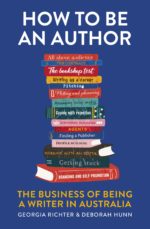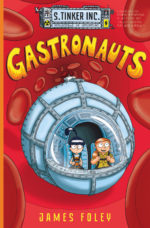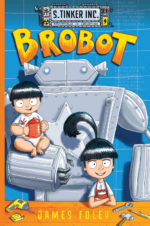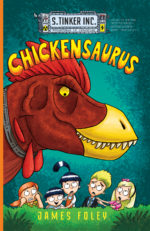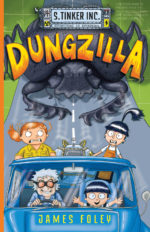Are you a budding graphic novelist? Check out these 10 top tips from James Foley
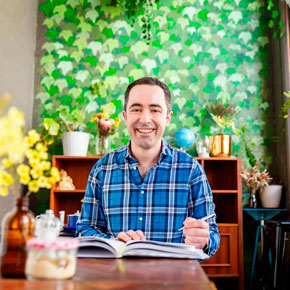
Hello, I’m James Foley, author of the hugely popular S.Tinker Inc. series of graphic novels for younger readers that includes Brobot, Dungzilla and my new book, Gastronauts.
Over the years I’ve been working as a writer and illustrator, I’ve picked up loads of top tips that have helped me write and illustrate my own graphic novels.
Here are 10 that I hope can help you too.
1. Read widely
Read a range of comics and graphic novels – it’s important to understand that this is a medium and not a genre. You can tell all sorts of stories using this medium. Also read a range of fiction, not just comics. Read them once for pleasure and a second time with your writer/illustrator hat on, so you can figure out how they’ve gone about telling their story, then see if you can apply any of those lessons to your own work. Even if you end up reading something you don’t like, that can still teach you something; ask yourself what you don’t like about it and what you would change if you had written it.
2. Watch widely
I believe that comics and film are closely related media. Both tell stories via a set of sequential images; both rely heavily on the visual narrative. I’m a huge fan of movies, good-quality TV shows and animation, and the more I watch, the more I learn about visual storytelling. Everything I watch is potential inspiration and reference for a future comic.
3. Draw draw draw draw draw
No-one can escape the need to practice. Draw as much as you can stand to. But try to make it fun – draw what you want to draw, but also set yourself reasonable and healthy challenges so you can improve and get outside your comfort zone every once in a while.
4. Plan
It can take a long time to complete the final art for a comic or a graphic novel, so you want to make sure that the final art is the best way you can tell the story. This means you have to spend a lot of time planning things out before you do your final art – you need to script your story, draw thumbnails and storyboards for every panel on every page, and then sketch everything out. I usually spend at least half the time on a project doing planning, and the other half doing final artwork.
5. Efficiency and workflow
Because comics and graphic novels take so long to make and there are so many little steps involved, you need to develop some sort of process for planning, producing and organising your work. You need to find little shortcuts and time-saving tricks too when you’re drawing, even if it’s just saving five minutes per page. That could add up to 10 hours less work over the course of a whole comic.
6. Learn some digital illustration
This isn’t absolutely necessary – I know people who make comics with paper and pen and they do it awesomely. I’ve just found in my work that digital illustration suits me; it helps me to keep my artwork consistent, it helps me to make changes more quickly and easily, and helps me to be more efficient.
7. Study graphic design
You don’t have to do a whole degree! Find a course for beginners or a book or a blog – something to help you learn the basics. Trying your hand at some graphic design projects will improve your layout and typography skills, which are both essential to illustrating comics.
8. Follow artists and writers you admire
Find their Instagram accounts and blogs. Often you’ll pick up tips and tricks that can help you make your work more professional and improve your workflow.
9. Read Scott McCloud
Mr McCloud made some fantastic books called Understanding Comics and Making Comics. They’re must-reads for anyone who wants to, uh, understand or make comics. He made a third one called Reinventing Comics, which is pretty fascinating, but only for people who are super into comics and want to push the boundaries of the medium.
10. Persistence and progress
As I’ve already mentioned, comics and graphic novels take a lot of time to complete, so you’ll need ways to sustain your stamina over the course of a project. The easiest way is to pick projects that you’re passionate about; otherwise it’s too easy to give up part way through. I play music and sometimes movies in the background while I’m working to keep me focused and motivated. I also keep a progress chart that shows me where I’m at with a project. The more projects you do, the more you learn your own working rhythms; now I always expect to feel like giving up somewhere between halfway and two thirds of the way through a project. I know that if I push through, it will pass, then I’ll get an extra burst of energy on the home stretch.
Those are my 10 tips – I hope they help you to make the comics you’ve always wanted to! You can find me on Facebook, Twitter, Instagram and YouTube as @jamesfoleybooks, or on my website, www.jamesfoley.com.au.
Good luck!
James Foley’s latest book in the S.Tinker Inc. series, Gastronauts, will be published in October. It’s available to pre-order on the Fremantle Press website now.





